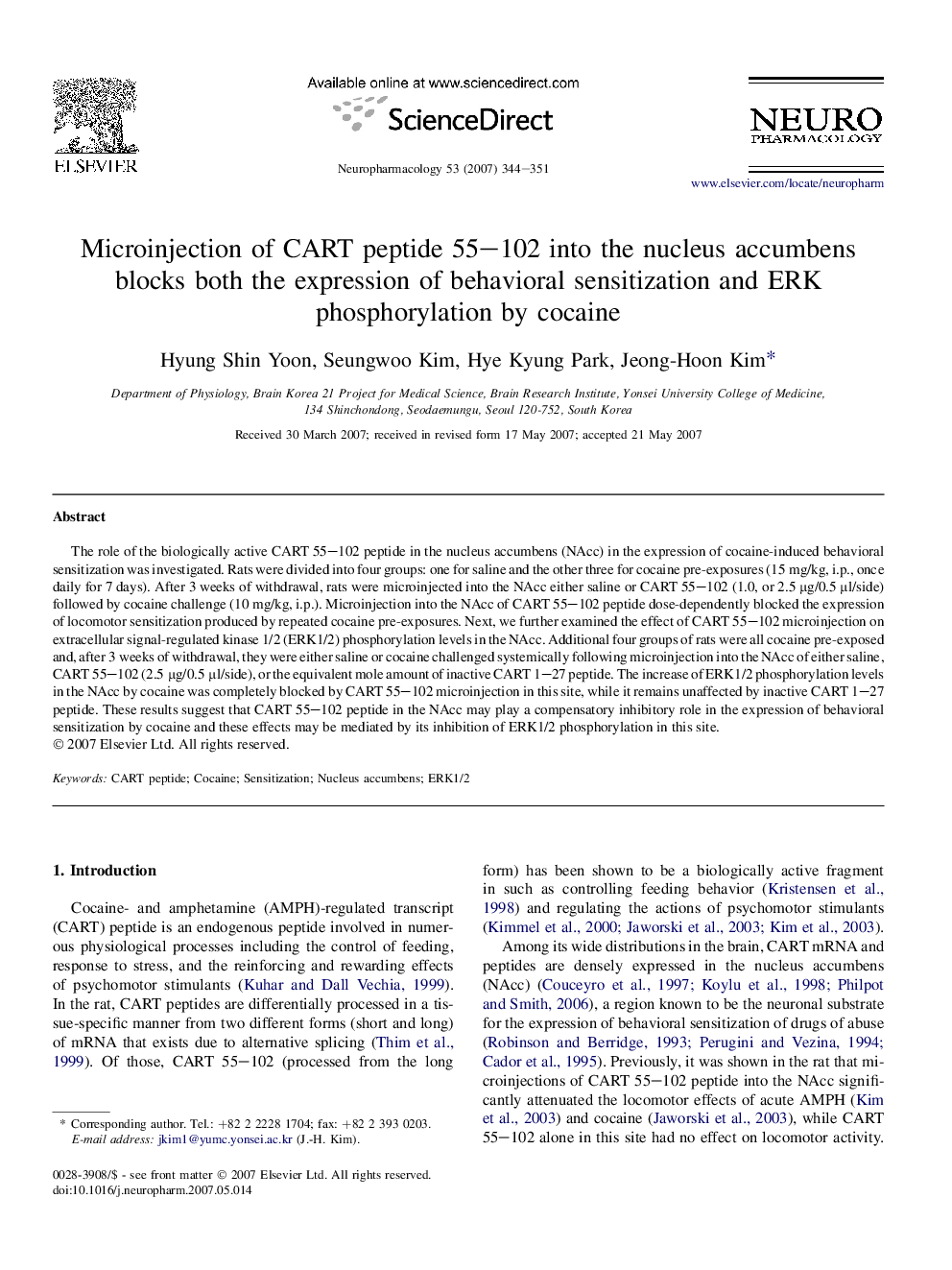| Article ID | Journal | Published Year | Pages | File Type |
|---|---|---|---|---|
| 2495281 | Neuropharmacology | 2007 | 8 Pages |
The role of the biologically active CART 55–102 peptide in the nucleus accumbens (NAcc) in the expression of cocaine-induced behavioral sensitization was investigated. Rats were divided into four groups: one for saline and the other three for cocaine pre-exposures (15 mg/kg, i.p., once daily for 7 days). After 3 weeks of withdrawal, rats were microinjected into the NAcc either saline or CART 55–102 (1.0, or 2.5 μg/0.5 μl/side) followed by cocaine challenge (10 mg/kg, i.p.). Microinjection into the NAcc of CART 55–102 peptide dose-dependently blocked the expression of locomotor sensitization produced by repeated cocaine pre-exposures. Next, we further examined the effect of CART 55–102 microinjection on extracellular signal-regulated kinase 1/2 (ERK1/2) phosphorylation levels in the NAcc. Additional four groups of rats were all cocaine pre-exposed and, after 3 weeks of withdrawal, they were either saline or cocaine challenged systemically following microinjection into the NAcc of either saline, CART 55–102 (2.5 μg/0.5 μl/side), or the equivalent mole amount of inactive CART 1–27 peptide. The increase of ERK1/2 phosphorylation levels in the NAcc by cocaine was completely blocked by CART 55–102 microinjection in this site, while it remains unaffected by inactive CART 1–27 peptide. These results suggest that CART 55–102 peptide in the NAcc may play a compensatory inhibitory role in the expression of behavioral sensitization by cocaine and these effects may be mediated by its inhibition of ERK1/2 phosphorylation in this site.
